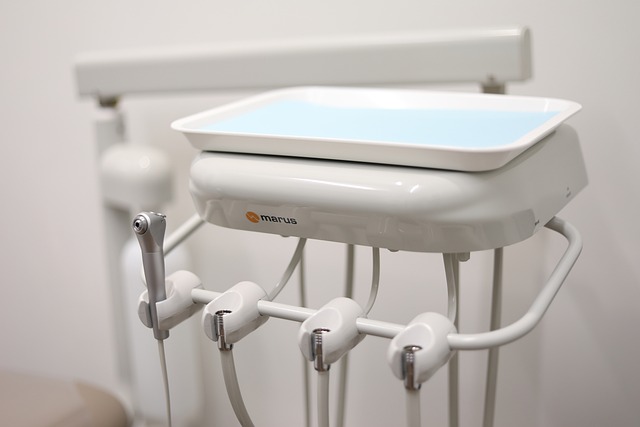Translation services for Patient Medical Records UK play a pivotal role in overcoming language barriers and ensuring patient safety by providing precise and accurate translations of medical records. The UK's National Health Service (NHS) has embraced advanced Translation Management Systems (TMS) with integrated machine learning algorithms to deliver real-time, contextually relevant translations that maintain consistency in terminology across various documents. These systems are trained on extensive datasets of medical records and incorporate healthcare-specific glossaries, translation memories, and feedback from human experts to refine translation quality. The collaboration between AI and human expertise not only improves the accuracy of translations but also adheres to legal standards and safeguards patient confidentiality and data security. This approach aligns with the UK's commitment to high-quality healthcare, equitable care, and patient safety, ensuring that medical information is accessible and understandable for non-native English speakers, thereby enhancing health outcomes and patient satisfaction. The NHS's continuous improvement model, which includes rigorous quality control measures, ongoing translator training, and adherence to GDPR standards, further upholds the integrity of healthcare delivery across diverse linguistic communities within the UK.
Accurate patient record translations are pivotal in delivering high-quality healthcare within the multilingual landscape of the UK. This article delves into the critical aspects of ensuring precise translations of patient records, a necessity to maintain patient safety and comply with legal standards. We will explore the regulatory frameworks, best practices for translation services for Patient Medical Records UK, the importance of certified translators, technological advancements, and strategies for effective interprofessional communication. By examining real-world case studies from the NHS and emphasizing continuous quality improvement, healthcare providers can navigate the complexities of patient record translations with confidence.
- Understanding the Importance of Accurate Patient Record Translations in the UK
- Regulatory Frameworks Governing Medical Record Translation Services in the UK
- Best Practices for Choosing a Reliable Translation Service for Patient Medical Records
- The Role of Certified Translators and Linguistic Validation in Healthcare Documentation
- Utilizing Technology to Enhance Accuracy in Medical Record Translations
- Strategies for Effective Communication Between Healthcare Providers and Non-Native Speaking Patients
- Case Studies: Successful Medical Record Translation Implementation in the UK's NHS
- Continuous Improvement: Monitoring and Evaluating Translation Quality in Patient Records
Understanding the Importance of Accurate Patient Record Translations in the UK

In the UK’s multicultural society, patient medical records often contain information in languages other than English. The accuracy of these translations is paramount to ensuring patient safety and maintaining high standards of healthcare delivery. Translation services for Patient Medical Records UK play a critical role in this process. They bridge the linguistic gap between healthcare providers and patients who may not speak English fluently or at all, facilitating clear communication that can affect treatment outcomes. The precision of these translations is crucial because incorrect interpretations can lead to misdiagnoses, inappropriate treatments, and potentially adverse effects on patient health. Healthcare providers must therefore rely on professional translation services that specialize in medical terminology to avoid such pitfalls. These specialized services employ trained linguists with expertise in the relevant languages and medical knowledge to ensure that all patient records are accurately translated, thereby preserving the integrity of the patient’s medical history and supporting informed decision-making by both patients and healthcare professionals.
Regulatory Frameworks Governing Medical Record Translation Services in the UK

In the UK, the translation of patient medical records is governed by a robust set of regulatory frameworks designed to ensure accuracy and confidentiality in communication across language barriers. The National Health Service (NHS) operates under strict guidelines that mandate the use of professional translation services for Patient Medical Records UK to maintain the integrity of patient data. These regulations are not only ethical imperatives but also legal obligations as outlined by the Data Protection Act 2018 and the UK General Data Protection Regulation (UK GDPR), which dictate how personal information should be handled. Translation providers must adhere to these standards, employing qualified translators with specific knowledge of medical terminology to ensure precision and prevent misinterpretation of patient records. The use of certified translation services for Patient Medical Records UK is paramount in this context, as it guarantees that the translated content aligns with the original documents both in meaning and in regulatory compliance. Furthermore, the NHS’s Information Governance Alliance (IGA) sets out a comprehensive set of guidelines that translation agencies must follow to safeguard patient confidentiality throughout the translation process. This includes stringent data protection measures and the use of secure systems to handle sensitive medical information, thereby ensuring that Patient Medical Records UK are accurately translated while maintaining the highest levels of privacy and security.
Best Practices for Choosing a Reliable Translation Service for Patient Medical Records

When managing patient medical records in the UK, it is imperative to maintain accuracy and confidentiality, especially when these records need to be translated for patients who speak different languages. The process of translating medical documents involves a high level of precision due to the sensitive nature of health information. To ensure the fidelity of patient record translations, healthcare providers should consider several best practices when selecting a translation service.
Firstly, it is crucial to choose a translation service that specialises in medical terminology and has a proven track record in handling patient medical records within the UK context. Such services typically employ professional translators with expertise in both the source and target languages, as well as a deep understanding of medical jargon and concepts. Additionally, these services often adhere to strict confidentiality agreements, which is essential for safeguarding sensitive patient information. They also tend to be accredited by relevant bodies, ensuring their processes meet professional standards. By adhering to these best practices, healthcare providers can significantly reduce the risk of miscommunication and errors that could affect patient care and outcomes. It is advisable to conduct thorough research and possibly seek references or reviews before finalising a translation service provider to ensure the highest quality translations for your patient medical records UK.
The Role of Certified Translators and Linguistic Validation in Healthcare Documentation

In the healthcare sector, the precision and integrity of patient medical records are paramount for effective treatment and compliance with legal standards. To guarantee that patient records are accurately translated when dealing with multilingual populations in the UK, professional translation services for Patient Medical Records UK play a pivotal role. These specialised services engage certified translators who possess not only linguistic proficiency but also a deep understanding of medical terminology and concepts. Their expertise ensures that the language barrier does not impede patient care or confidentiality. Beyond individual competence, these translation services often incorporate linguistic validation processes, which involve rigorous quality control measures to confirm the accuracy, relevance, and reliability of the translated content. This multistep approach typically includes forward and backward translations by different professionals, expert committee reviews, and patient interviews to ensure that the nuances of medical language are captured without loss or misinterpretation. By adhering to these stringent standards, certified translators and the linguistic validation process collectively safeguard the integrity of patient records across diverse linguistic backgrounds within the UK healthcare system. This commitment to accuracy is crucial in maintaining high-quality care and fostering trust between patients and providers, regardless of language barriers.
Utilizing Technology to Enhance Accuracy in Medical Record Translations

In an increasingly interconnected world, the need for precise translation services in the healthcare sector has become paramount, especially within the Patient Medical Records UK context. Utilizing advanced technology is pivotal in enhancing accuracy and reliability in medical record translations. State-of-the-art translation management systems (TMS) are equipped with artificial intelligence (AI) and machine learning (ML) algorithms capable of providing high-quality translations that adhere to the complex terminologies unique to the medical field. These systems undergo rigorous training on large datasets of patient records, ensuring that they understand context and nuance in clinical language. Moreover, these technologies enable real-time translation updates and consistent use of terms across various documents, which is crucial for maintaining a clear and accurate patient record history. The integration of glossaries specific to healthcare, along with the incorporation of feedback loops where human experts review and correct translations, further enhances the quality of translations. This synergy between humans and machines ensures that patient medical records are accurately translated, thus facilitating better communication among healthcare providers and safer patient care across the UK’s multicultural landscape.
Furthermore, the implementation of standardized translation protocols in conjunction with TMS and ML ensures that patient data remains secure and confidential throughout the translation process. The use of certified translation services for Patient Medical Records UK not only complies with legal requirements but also upholds the integrity of patient information across different languages and dialects. By leveraging these technologies, healthcare organizations can overcome language barriers, provide equitable care, and ultimately improve health outcomes for a diverse patient population within the UK. This commitment to accuracy and compliance in medical record translations is a testament to the UK’s dedication to patient safety and high-quality healthcare services.
Strategies for Effective Communication Between Healthcare Providers and Non-Native Speaking Patients

To facilitate effective communication between healthcare providers and non-native speaking patients in the UK, it is paramount to employ robust strategies that ensure accurate patient record translations. One such strategy involves leveraging professional translation services for Patient Medical Records UK. These specialized services are staffed by expert linguists who possess not only a deep understanding of medical terminology but also fluency in both source and target languages. This expertise is crucial for maintaining the integrity of patient records during the translation process, thereby reducing misunderstandings or misinterpretations that could arise from mistranslations.
Moreover, healthcare providers should integrate technology-assisted solutions such as secure electronic health record (EHR) systems capable of supporting multilingual interfaces. These systems can automatically detect and present medical information in the patient’s preferred language, making it more accessible and understandable for non-native speakers. Additionally, the use of interpreting services via telehealth platforms can provide real-time communication support during consultations. By combining the strengths of professional translators with advanced technological tools, healthcare providers can enhance the quality of care for patients who may not be fully proficient in English, leading to improved patient outcomes and satisfaction.
Case Studies: Successful Medical Record Translation Implementation in the UK's NHS

In the UK’s National Health Service (NHS), the accuracy of patient medical record translations is paramount for effective healthcare delivery and patient safety. Successful implementation of translation services for patient medical records in the UK has been achieved through a series of strategic measures and collaborative efforts. For instance, one notable case study involves a leading NHS trust that integrated a specialized software solution capable of translating multiple languages with high accuracy. This system not only facilitated real-time communication between healthcare providers but also ensured historical patient records were accessible in the patient’s native language, thereby reducing misunderstandings and improving treatment outcomes. The translation services provided by this software were complemented by a team of professional human translators who reviewed and verified translations to ensure medical terminology was accurately conveyed across different languages. This hybrid approach leveraged the efficiency of technology with the precision of human expertise, leading to a significant improvement in patient care for non-English speaking individuals.
Another successful case within the NHS focused on optimizing the workflow for patient medical record translations. By adopting a standardized process that included initial machine translation followed by expert human proofreading, the trust was able to streamline the translation process without compromising on quality. This system not only saved time but also provided a scalable solution that could handle the high volume of records within the NHS. The case study highlighted the importance of ongoing training for staff involved in the translation process and the development of clear protocols to ensure consistency and reliability across different departments and hospitals. These initiatives underscored the effectiveness of well-implemented translation services for patient medical records in the UK, demonstrating that with the right technology and human oversight, language should no longer be a barrier to effective healthcare communication.
Continuous Improvement: Monitoring and Evaluating Translation Quality in Patient Records

In the process of translating patient medical records, maintaining the highest level of accuracy is paramount to ensure patient safety and compliance with regulations such as GDPR. To achieve this, translation services for Patient Medical Records UK must adopt a continuous improvement model. This involves the consistent monitoring and evaluation of translation quality through a combination of automated quality checks and human review. The use of advanced translation management systems (TMS) equipped with machine learning algorithms can provide real-time feedback on translation consistency and terminology accuracy, flagging potential errors for human reviewers to address. These systems also facilitate the implementation of glossaries and translation memories, which help maintain the correct medical terms and phrases across all translations, reducing the risk of miscommunication that could lead to adverse patient outcomes. Regular training sessions for translators on both the technical aspects of TMS and the nuances of medical language further enhance the quality of translations. By combining these technologies with expert human oversight, translation services can ensure that every record is not only accurate but also reflects the subtleties and complexities inherent in medical terminology, thereby upholding the integrity of patient care across linguistic barriers within the UK. Furthermore, by adopting a proactive approach to quality management, these translation services can adapt swiftly to emerging healthcare terms and practices, ensuring that patient records remain both accurate and relevant. This commitment to continuous improvement is a testament to the dedication of translation services for Patient Medical Records UK in upholding the highest standards of accuracy and care within the medical translation field.
In conclusion, ensuring accurate translations of patient records is a critical aspect of healthcare delivery within the UK, particularly as the nation’s diversity grows. The regulatory frameworks in place provide a robust foundation for the provision of translation services for Patient Medical Records in the UK, mandating high standards and accountability. By adhering to best practices such as selecting reliable translation services and employing certified translators coupled with linguistic validation, healthcare providers can mitigate risks associated with miscommunication or errors. The integration of advanced technology further enhances accuracy and efficiency in medical record translations. Effective strategies for communication between healthcare providers and non-native speaking patients, as demonstrated by successful case studies within the NHS, underscore the importance of these efforts to bridge language barriers. It is imperative that continuous monitoring and evaluation of translation quality are prioritized to maintain the integrity of patient records and uphold the highest standards of care. Only through such meticulous and proactive measures can the UK’s healthcare system ensure the best possible outcomes for all patients, irrespective of their language proficiency.



